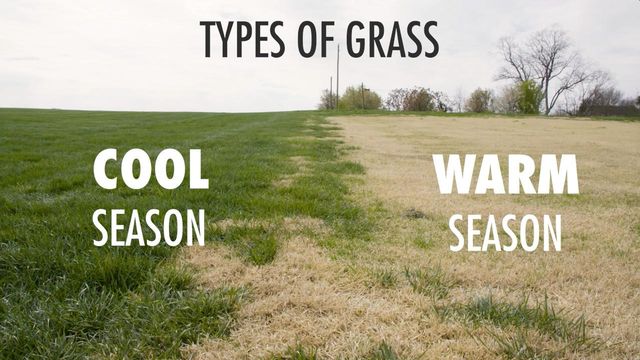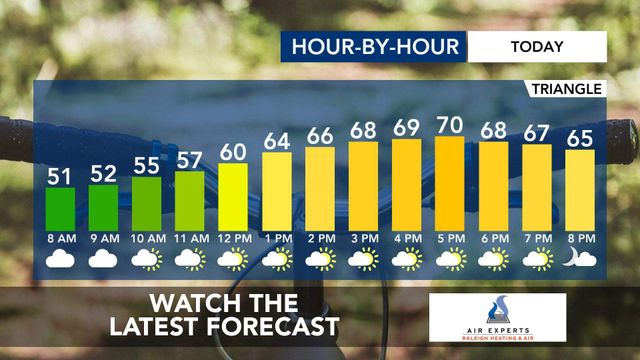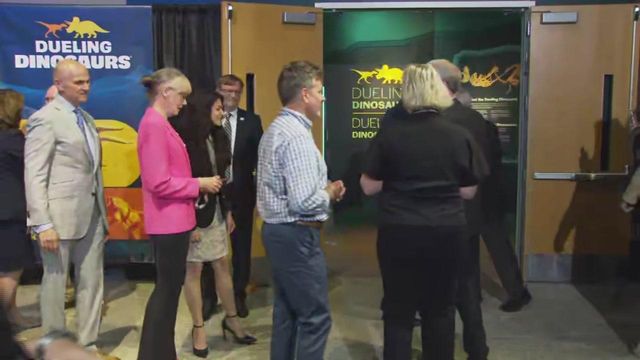Got brown grass? Why dormant grass doesn't mean it's dead
This story was written for our sponsor, North Carolina Sod Producers Association.
There is nothing that complements a house more than a manicured lawn of green grass sprawled before it. But the reality is, green grass can be seasonal.
Cool season grasses such as tall fescue and Kentucky bluegrass may go off color in the summer as temperatures rise and drought occurs. Likewise, warm season grasses such as Bermuda, zoysia, St. Augustine and centipede can start to go off color and eventually turn brown as temperatures drop in the fall.
"In both instances, the grass is not green because of the loss of chlorophyll, a necessary component for photosynthesis to take place," said Dr. Grady Miller, a professor at North Carolina State University. "It's important to keep the seasonality of green grass in mind before you call in the cavalry of lawn experts, landscapers and pest control professionals.”
Homeowners that are not accustomed to lawns of warm season grasses can be upset about seeing their lawn turn brown in the fall. The tendency is to blame a pest such as a disease or an insect.
The problem may not be a problem at all. Brown grass can be as much a part of seasonal changes as the colorful leaves in autumn.
Uniform browning of warm-season grasses across the lawn is not usually caused by a pest such as diseases and insects but rather by temperature changes. Pests, on the other hand, result in sporadic patches of brown grass in certain areas of the lawn.
Warm season grasses naturally turn brown when the average soil temperature approaches 50 degrees or below and does not green up again until that threshold temperature is reached in the spring. Note, it is soil temperature, not air temperature, that will kick these varieties in and out of dormancy. That is the reason shade or a low spot can affect the color of grass, or why one neighbor's lawn will be so much greener than the one next door.
Why your grass goes brown and how weather affects its color
Grass turning brown is a kind of self-defense mechanism that can be likened to bears hibernating in the winter. Even though bears sleep during the cold months and lie "dormant," they are still alive. And just like leaves on a tree changing colors, the turf plants are also still alive. Unfortunately, (or fortunately) the grass leaves do not turn those brilliant colors associated with fall foliage.
The old leaves decompose and are replaced with new leaves originating from a growing point that is near the soil surface. That growing point is composed of buds just like deciduous plants, but it is so close to the ground and covered by plant material that you readily see it without a very close inspection.
If you get on your hands and knees, and move some of the dead leaves, you might be able to see the new leaves being formed.
To some extent, the old dead leaves act as insulation and protect the growing plant, fostering optimal conditions for new growth. In fact, in areas where cold injury can occur to warm season grasses, it is suggested that the mowing height be raised to help protect the growing point.
"When your lawn turns brown after the first hard frost, a homeowner does not need to do anything else to the lawn," Miller said. "New homeowners with their first lawn may find that hard to believe. But the grass is doing exactly what it is supposed to do. Leave it alone. It will turn green when spring arrives."
Even grass that is supposed to stay green year round can have a brown day. Cool season grasses such as tall fescue and Kentucky bluegrass can turn brown when the temperature gets too high or when it's under drought stress. Again, this browning is a self-defense mechanism.
Cool season grasses prefer the spring and autumn and go semi-dormant during the hottest time of the summer or the coldest part of winter.
Unseasonal weather, whether it’s a warm spell in the winter or a cool spell in the summer, can affect the color of grass – depending on the kind of grass. And until homeowners can affect the weather, they need to accept that the grass may not always be a dark green color.
Miller said these climate-induced color changes are often short-lived. Given a little time and a temperature change, it will green back up without any further inputs.
The worst time to fertilize is when either warm or cool season grasses are dormant. Dormant lawns are unable to take up the nutrients efficiently.
Finally, if the dormant season is finished and a lawn is still mostly brown, the problem could be a lack of water, or worse. Your county cooperative extension service can provide free advice.
This story was written for our sponsor, North Carolina Sod Producers Association











